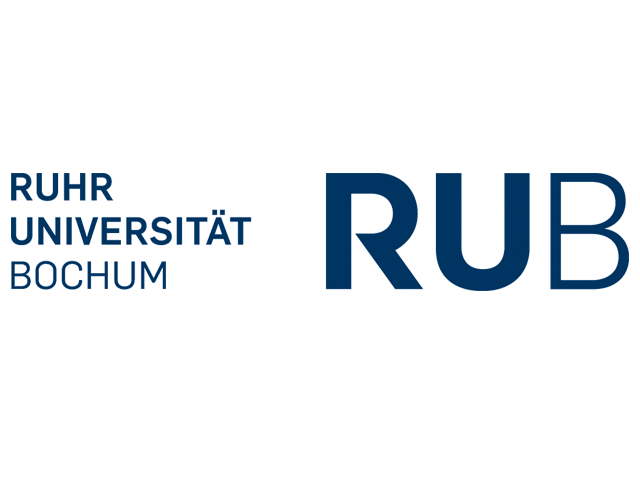
Workshop "Present and Future Perspectives in Hadron Physics"
We are pleased to announce the Workshop “Present and Future Perspectives in Hadron Physics”, which will take place in person from Monday 17 to Wednesday 19 June 2024, at INFN-LNF in Frascati, Italy.
The Workshop aims to bring together a broad community of researchers active in Hadron Physics, encompassing both young and expert researchers, to engage in discussions about the latest accomplishments and future prospects across various domains of Hadron Physics and related fields. It will include invited and contributed talks, as well as poster presentations.
Further details and updates can be found on the website:
https://agenda.infn.it/event/38467/
The registration is open until 15 May 2024.
We also invite interested contributors to submit their abstracts through the website, via the Call for Abstracts section. Submissions will be open from 10 February 2024, with a deadline set on 15 April 2024. The authors of the selected contributions will be notified by 10 May 2024.
STRONG-2020 offers an opportunity to cover local and travel expenses for young researchers.
The Workshop will be followed by the STRONG-2020 Annual Meeting, organized in Frascati on 20-21 June 2024 and open to a large audience. The Agenda will be soon available and the Registration is already possible at the dedicated site:
Bienvenue WelcomeWillkommenBenvenutoBienvenidoto the STRONG-2020 website
STRONG-2020 “The strong interaction at the frontier of knowledge: fundamental research and applications” has received funding from the European Union’s Horizon 2020 research and innovation programme under grant agreement No 824093.
Objectives of the project
The strong interaction is one of the cornerstones of the Standard Model (SM) of particle physics, and its experimental and theoretical study attracts an active community of about 2500 researchers in Europe.
The list of fundamental open questions at the frontier of our current knowledge in the strong interaction is very rich and varied including a full understanding of (i) the partonic structure of hadrons, (ii) exotic hadronic states, properties of (iii) dense quark matter and of (iv) hot and dense quark-gluon plasma, as well as (v) precision tests of the SM. Such research topics are studied experimentally and theoretically mostly via particle collisions at low (a few tens of GeV) and high (up to 14 TeV) energies. Associated developments in state-of-the-art detectors/data-acquisition/beams/targets are required, as well as in theoretical (lattice, effective field, perturbative) calculations.
The STRONG-2020 project brings together many of the leading research groups and infrastructures involved today in the study of the strong interaction in Europe, and also exploits the innovation potential in applied research through the development of detector systems with applications beyond fundamental physics, e.g. for medical imaging and information technology. The Consortium includes 46 participant institutions, embracing 14 EU Member States, one International EU Interest Organization (CERN), and one EU candidate country. Together with host institutions of 21 other countries, without EU funds benefits, the project involves research in 36 countries. The project is structured in 32 Work Packages (WP): 7 Transnational Access Activities (TA), 2 Virtual Access Activities (VA), 7 Networking Activities (NA) and 14 Joint Research Activities (JRA). Furthermore, 2 WPs take care, respectively, of the “Management and Coordination” of the project and of “Communication and Outreach".
Statement on the aggression of Russian Federation against Ukraine

ON AIR!
Do you want to know more? Then follow us on our
YOUTUBE CHANNEL
PICTURES OF STRONG-2020 ANNUAL MEETING

First of all, we want to thank you for your precious work that we got to known during the STRONG-2020 Annual Meeting. Furthermore, we want to thank all speakers and participants who attended the STRONG-2020 Annual Meeting in-person and online.
We are very glad to announce that the pictures of the STRONG-2020 Annual Meeting have been published in the PICTURES GALLERY:
http://www.strong-2020.eu/events/pictures-gallery.html.
MANAGEMENT AND DISSEMINATION
MAN-Project Management and Coordination
MAN-Project Management and Coordination
DISCO-Dissemination and Communication
The main aim of the DISCO WP is to promote and realize efficient and targeted dissemination, exploitation of results and communication activities resulting from the dedicated research and transnational activities performed within the project, in order to raise the awareness about their importance, to promptly inform the various communities on the obtained results and to enhance the future financing opportunities targeting the self-sustainability of the involved community, with special care on sex and gender dimension. DISCO is a transversal and integrated activity, which involves all the other WPs of the project. The objective is to promote and realize dissemination and communication of the results coming from the project, with special focus on the involved research infrastructures, toward: - The scientific community of specialists in hadron physics: aiming to present the main results coming from the project activities, the research infrastructures dedicated to the strong interaction studies and the working opportunities both within the researchers community involved in the project, inter-WPs, contributing to cross-fertilization and birth of new ideas, as well as to those researchers who are not directly involved in the project in order to look for new collaborations and scientific opportunities. - The wider scientific community: aiming to present the main results coming from the project activities and the research infrastructures to those researchers who are not directly involved in research in strong interaction physics. - The general public, industry representatives and policy makers: aiming to present the main results coming from the project activities and the research infrastructures to the general public, policy makers, industry representatives, students, children, to raise the awareness about this type of research and related infrastructures, to promote a new generation of scientists and enhance future financing opportunities
SCIENTIFIC FRONTIERS
LOW ENERGY FRONTIER
JRA3-PrecisionSM
Precise determination of the muon anomalous magnetic moment (g-2)μ; the CKM matrix element Vud from beta decay, and the weak mixing angle from parity-violating electron scattering. Associated novel constraints (or discovery) of physics beyond the SM.
JRA3-PrecisionSM
NA4-PREN
NA6-LatticeHadrons
Development of combined software, data sharing, and methodologies in lattice QCD theory across Europe along 4 axes: (i) hadron spectroscopy and structure, (ii) hadrons under extreme conditions, (iii) hadrons in the SM and beyond, (iv) novel numerical algorithms and computing for lattice hadron physics.
NA6-LatticeHadrons
JRA7-HaSP
NA1-FAIRnet
NA1-FAIRnet
NA5-THEIA
HIGH ENERGY FRONTIER
JRA5-GPD-ACT
Extraction of GPDs from new high-precision QCD analyses of novel high-statistics e-p and p-p measurements at fixed-target and collider energies.
JRA5-GPD-ACT
JRA4-TMD-neXt
JRA6-next-DIS
JRA6-next-DIS
NA2-Small-x
JRA2-FTE@LHC
Development of novel gas-target techniques to be able to carry out the most energetic fixed-target collisions ever performed in the lab, using the LHC beams at ALICE and LHCb. Evaluation of the novel expected constraints on PDFs at high-x in the proton and nucleus, parton spin dynamics, as well as QGP properties via unique quarkonia measurements.
JRA2-FTE@LHC
NA3-Jet-QGP
Development of novel experimental and theoretical techniques for jet physics in A-A collisions, providing a reference implementation of jet interactions in a QGP via a full heavy-ion Monte Carlo (MC) event generator. Definition of new observables and development of new tools (based on quark/gluon jet substructure variables via machine-learning techniques) with increased sensitivity to the physical mechanisms involved in jet-QGP interactions.
NA7-Hf-QGP
NA7-Hf-QGP
JRA1-LHC-Combine
INSTRUMENTATION
JRA14-MPGD_HP
Development (up to the prototype stage) of new gas detectors with improved capabilities in tracking, charged particle identification, photon detection, and timing in the picosecond region, capable of operating under very high beam intensity conditions.
JRA14-MPGD_HP
JRA9-TIIMM
Development of new silicon detectors based on Monolithic Active Pixel Sensors (MAPS) for high-precision tracking, and energy loss measurement for advanced particle identification.
JRA8-ASTRA
Development of beyond state-of-art radiation detectors based on semiconductors (Cadmium Telluride, Cadmium Zinc Telluride) able to perform high-precision measurements of X-ray and gamma-ray photons in different environments/conditions.
JRA8-ASTRA
JRA10-CryPTA
JRA11-CRYOJET
JRA11-CRYOJET
JRA12-SpinForFAIR
Optimization of the polarization of protons and antiprotons beams and targets for the GSI/FAIR storage ring.
JRA13-P3E
Optimization of high-intensity polarized electron and positron beam sources, and full design of the Hydro-Møller polarimeter detector using high-voltage monolithic active pixel sensors (HV-MAPS).
JRA13-P3E
RESEARCH INFASTRUCTURES
Transnational Access
TA1-COSY
The cooler synchrotron and storage ring COSY has a race track design with a circumference of 184 m.
It delivers polarized and unpolarized proton and deuteron beams in the momentum range
from 300 MeV/c up to 3.7 GeV/c.
TA1-COSY
TA2-MAMI
TA3-LNF
TA3-LNF
TA4-FTD/ELSA
The FTD-ELSA represents a unique combination of infrastructures for hadron physics research and detector development, and includes:
- the FTD research building with high-grade laboratory space and dedicated instrumentation,
- the 3.2 GeV electron accelerator ELSA, hosting two hadron physics experiments and a detector test beamline,
- the Bonn Isochronous Cyclotron, offering 14 MeV/nucleon ion beams mainly for material irradiation.
TA5-GSI
TA5-GSI
TA6-ECT*
TA7-CERN
TA7-CERN
Virtual Access
VA1-NLOAccess
VA1-NLOAccess
VA2-3DPartons
3DPartons gives access to open-source code necessary for high precision phenomenology in the field of 3D hadron structure, with a specific emphasis on generalized parton distributions (GPDs) and transverse momentum dependent parton distributions (TMDs).
![]()



















































